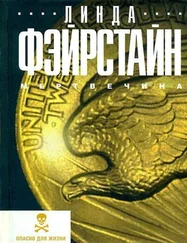She cocked her head, looked from one to the other, wondering if Urban had ordered them to be there. “You’ve begun?” she asked.
The Engineer gestured. A huge, translucent, three-dimensional model of the ship appeared, with the planned gee deck ghosted in. Dashed ribbons, brightly colored and branching like tributaries, linked the construction site to the stored matter at the ship’s core. “We’ve begun,” the Engineer confirmed.
The Bio-mechanic explained, “I’ve initiated the growth of matter channels to transport required material to the construction site, and carry undifferentiated tissue away.”
She nodded, eyeing the ribbons. “This is the easy part.”
“Easy for me,” the Bio-mechanic agreed acidly. “Easy now, after the centuries I’ve spent studying this system.”
Clemantine gritted her teeth. “I meant that this phase uses only Chenzeme biotechnology, so you don’t need to be so careful. The dangerous part comes when you begin defining human spaces.”
“Ah,” the Bio-mechanic said. “I will keep that in mind. Do you have other advice? I do so value the advice of those wholly lacking in expertise.”
Clemantine rolled her eyes. “You’re a sensitive flower, aren’t you?” she asked.
The Bio-mechanic’s eyes narrowed. His image changed, fading into the complex background of his frame—removing himself from the conversation in a fit of pique?
She shrugged, offering no apology, making no plea for him to stay. A flicker of surprise on his part and in moments he restored himself. In a crisp voice he informed her, “I know what I’m doing.”
“I’m confident of that,” Clemantine answered. “And I won’t insult you with amateur advice, but I do have an instruction.”
“Any change in the basic structure will slow the process,” the Engineer warned.
“Exactly,” she said. “That’s my instruction—or call it a request if the idea of an instruction exceeds whatever authority I might have. Allow no changes in the basic design. Nothing that will delay completion of the project. If someone attempts to introduce such a change, let me know.”
“All actions and relevant discussions are recorded in a log file,” the Engineer informed her. “Including this one.”
“Good,” she said. “I’ll set a DI to monitor that log—and all the others.”
She should have done it before, but she’d been lax, overwhelmed during the early days of the voyage by newness, and by the immediate demands of creating a home within the hostile body of this alien starship.
No more surprises , she resolved. She needed to comprehend her environment, understand the operation of the ship, know when tasks shifted, and when orders changed.
And she needed to discover whatever sordid detail it was that Urban didn’t want her to know, even though she suspected she’d be happier not knowing.
She left the library, leaving the Apparatchiks to their work, but she did not return to her atrium. Instead, she entered the complex of Dragon ’s neural bridge, intent on continuing her mission of verification.
The bridge was a cross-linked web of neural filaments extending throughout the ship, studded with cardinal nanosites—tiny processing nodes that tracked and monitored the surrounding tissue. The cardinals supported a limited virtual environment that allowed Clemantine to access the data they’d collected, in numeric and text form and also visually, so that she could see the structure of the tissue surrounding each node.
But the cardinals offered no representation of Clemantine’s physical presence. She existed only as a mote of awareness, a disembodied will. It was a state she heartily loathed. Although the cardinals were easy to instruct and she had no trouble moving between them, the absence of even an illusion of physical existence left her plagued by an underlying panic, in quiet terror of being trapped in that disembodied state.
She thought of Urban. She could not sense the presence of his ghost but she knew he was somewhere on the bridge. He was always on the bridge. It dismayed her to think he endured this state all the time. She wondered if he’d edited his psyche to do it, or if his brash confidence was enough to fend off the doubt that haunted her.
Despite her doubt, her fear, her aversion to that mode of existence, she continued her inspection, moving from cardinal to cardinal, assessing the function and status of the ship’s diverse array of bio-mechanical tissues, sensing its metabolic heat, aware of the incessant probing of Chenzeme nanomachines, and the firm push-back of the defensive Makers that guarded the bridge. She let herself feel it all, and she began to fit it all within a mental map, verifying what she’d been told about the structure of the ship.
It would be so easy to retreat, to leave it all in Urban’s hands, to trust him in his role as master of Dragon —but she kept going. She had to.
It’s not like you have a choice .
A teasing, taunting challenge. A dare. Asking her to look more closely.
If Urban had a guilty secret, it surely involved either their shared past or the functioning of this ship. Clemantine was still wary of immersing herself in that other life, so instead of accessing the data cache he’d set aside for her, she’d come here. Resolved to inspect the ship first, face the truth of her past later.
Nowhere among the cardinals did she encounter anything to suggest forged data in the library files, or a critical truth, hidden.
She kept at it until she could find no path she had not already explored. Then she fled, retreating directly to her atrium where her ghost memories merged with the memories of her physical avatar—alone within her chamber, just waking up, tension and fatigue tangled up together as if she’d only just escaped the grip of a bad dream.
She sighed and stretched, grateful her inspection of the cardinals was over. She did not want to go back there again.
Only as she relaxed, as her tension eased, did it occur to her she’d found no pathway leading to the philosopher cells.
From his post within the restricted span of the high bridge, Urban monitored Clemantine’s tour of the lower cardinals. He logged the time she stayed at each node and the data she perused.
I trusted you . Past tense. She’d said it to shake him up and it had worked. She’d seen his concern and now she was looking for a discrepancy. A difference between what was and what ought to be. She wouldn’t find an answer out among the cardinals, but eventually she would work it out, or Vytet would. One of them would think to run the equations on Dragon ’s immense mass.
In all likelihood, Clemantine would never forgive him.
Vytet spoke to him in the library—another version of him, but he heard that conversation:
“You can’t assume this pre-construction phase is safe just because it uses all Chenzeme elements,” she argued, her brows knitting in frustration. “It is not a Chenzeme process. It will not be using elements in a way known to Chenzeme instinct.”
The Bio-mechanic answered her, though from within his frame he aimed his impatient glare at the Engineer, not at Vytet. “It is using elements in a known way,” he insisted.
The Engineer amended this claim, “To a point.”
Most of the courser’s mass was bio-mechanical tissue and stored material, but it was organized around a structural frame—the bones of the ship. The plan was to synthesize sheets of this framing material, shaping them into a huge cylinder surrounding a short segment of the core. The cylinder would be stationary, anchored to the ship’s frame. A second cylinder within the first would rotate on magnetic tracks, just fast enough to provide a small pseudo-gravity.
Читать дальше












